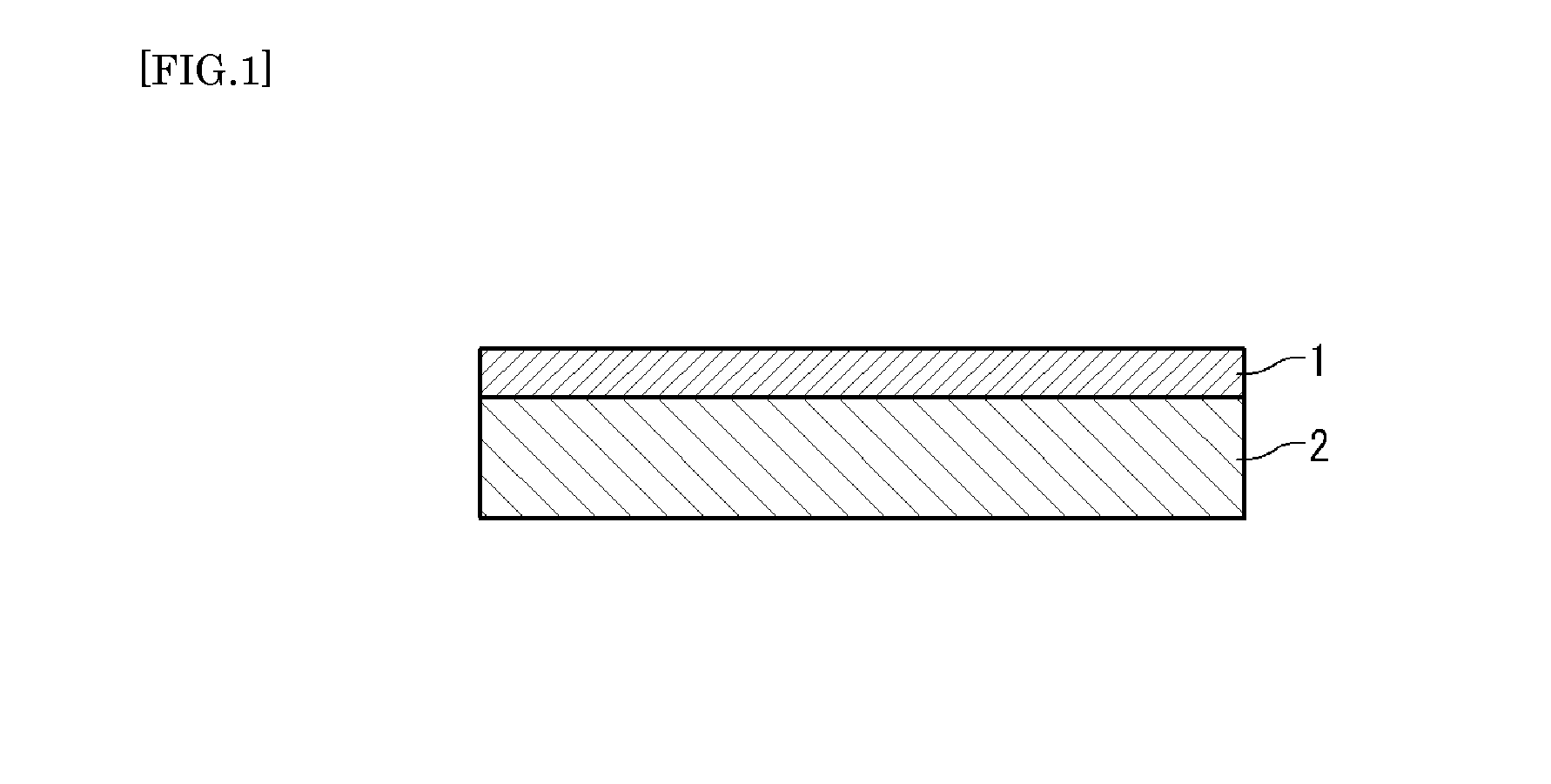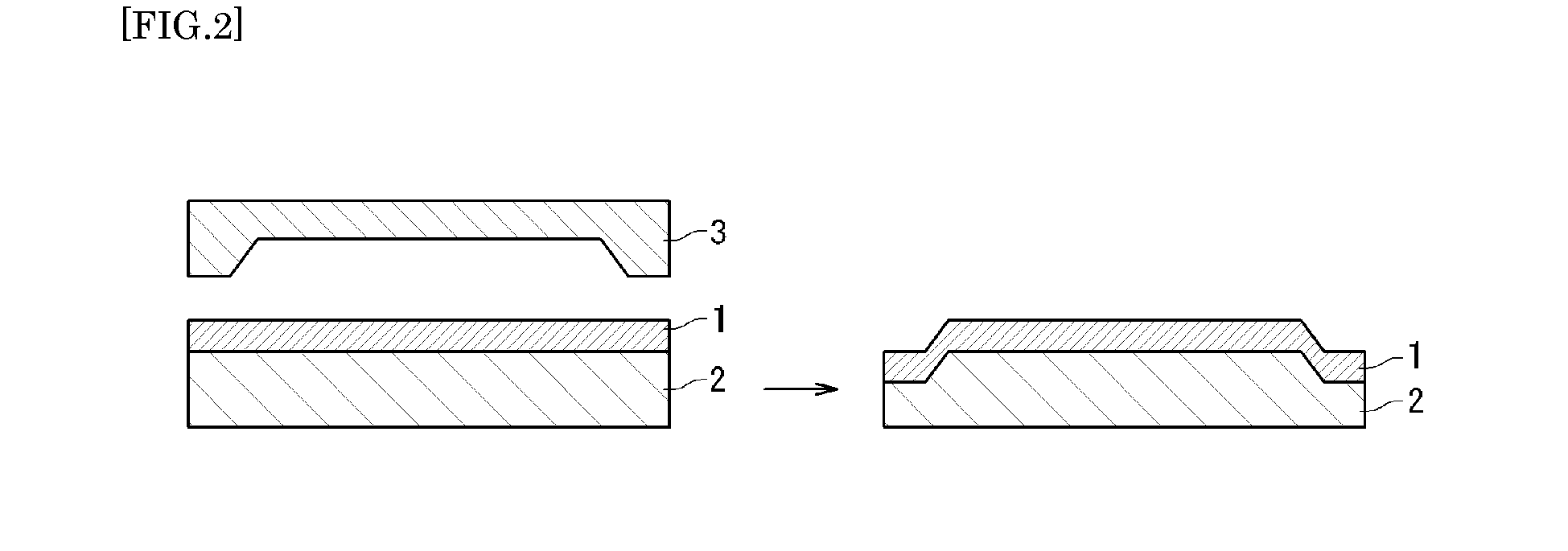Molding material
a molding material and material technology, applied in the field of molding materials, can solve the problems of low hardness of the molded body, interference of light rays, and decrease of reflectance, and achieve the effects of high hardness, high hardness, and good use
- Summary
- Abstract
- Description
- Claims
- Application Information
AI Technical Summary
Benefits of technology
Problems solved by technology
Method used
Image
Examples
example 1
[0236]A molding material was obtained by mixing 224.2 g of the polymer dispersion obtained in Producing Example 1, 2.5 g of 2,2′-azobis(2-methyl-butyronitrile) and 50.0 g of 1,6-hexanediol dimethacrylate with stirring. The minimum film-forming temperature of the resulting molding material was 0° C.
[0237]The resulting molding material was applied to a glass plate with a 10 mil applicator, and preliminarily dried at 50° C. for 1 hour, to form a thin film on the glass plate. The thickness of the thin film was about 100 μm.
[0238]Next, a die on which a concave / convex structure had been previously patterned with a pressing machine (depth of concave portion: about 10 μm) was used. The molding temperature (temperature of die) was controlled to 100° C., and the glass substrate was placed on the surface of the die, on which the concave / convex structure was patterned so that the surface on which the thin film was formed was faced downward. The thin film was maintained at 100° C. for 1 hour, an...
example 2
[0249]A molding material was obtained by mixing 224.2 g of the polymer dispersion obtained in Producing Example 1, 2.5 g of 2-methyl-1-[4-(methyl-thio)phenyl]-2-morpholinopropane-1-one and 50.0 g of 1,6-hexanediol dimethacrylate with stirring. The minimum film-forming temperature of the resulting molding material was 0° C.
[0250]The molding material was applied to a glass plate with a 10 mil applicator and previously dried at 50° C. for 1 hour, to form a thin film on the glass plate. The thickness of the thin film was about 100 μm.
[0251]Next, a die on which a concave / convex structure had been previously patterned with a pressing machine (depth of concave portion: about 10 μm) was used. The molding temperature (temperature of the die) was controlled to 25° C., and the glass substrate was placed on the surface of the die on which the concave / convex structure had been patterned in the state where the surface on which the thin film had been formed was faced downward. The pattern of the c...
example 3
[0252]A molded body was produced in the same manner as in Example 2 except that the molding temperature (temperature of die) was changed from 25° C. to 10° C. in Example 2. The minimum film-forming temperature of the resulting molding material was 0° C., and the difference between the molding temperature and the minimum film-forming temperature was 10° C.
[0253]The molding material obtained in the above was used, and a molded body was produced in the same manner as in Example 2. The physical properties of the molded body were examined in the same manner as in Example 1. The results are shown in Table 1.
PUM
| Property | Measurement | Unit |
|---|---|---|
| temperature | aaaaa | aaaaa |
| temperature | aaaaa | aaaaa |
| molding | aaaaa | aaaaa |
Abstract
Description
Claims
Application Information
 Login to View More
Login to View More - R&D
- Intellectual Property
- Life Sciences
- Materials
- Tech Scout
- Unparalleled Data Quality
- Higher Quality Content
- 60% Fewer Hallucinations
Browse by: Latest US Patents, China's latest patents, Technical Efficacy Thesaurus, Application Domain, Technology Topic, Popular Technical Reports.
© 2025 PatSnap. All rights reserved.Legal|Privacy policy|Modern Slavery Act Transparency Statement|Sitemap|About US| Contact US: help@patsnap.com



